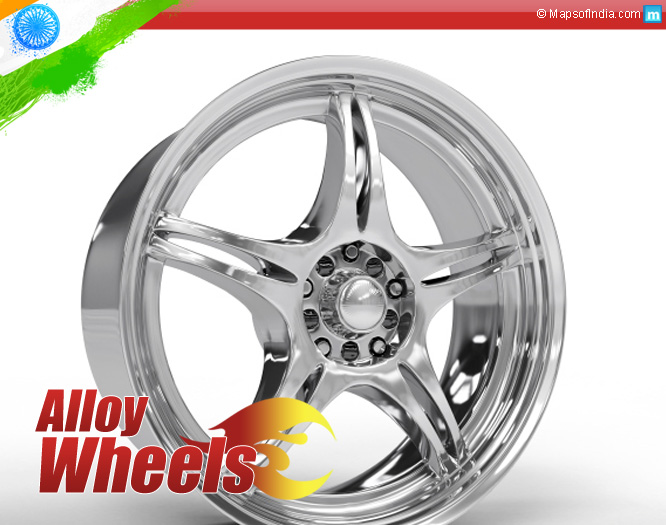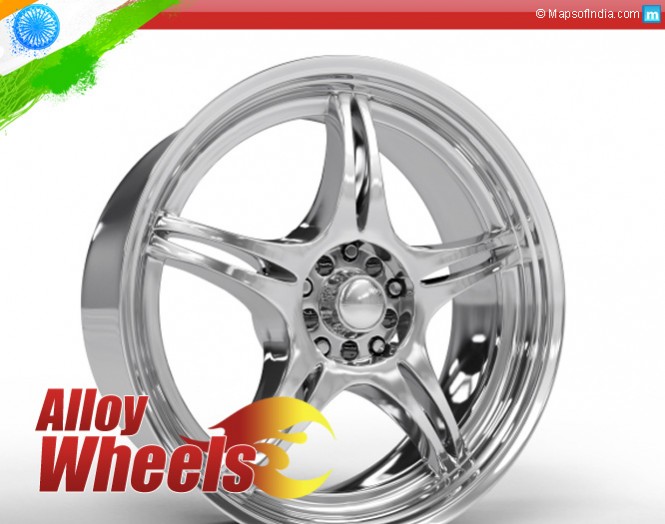The most important reason for the popularity and demand of aluminum wheel rims has been their low weight. But today some of them weigh more than steel rims, specially if they are wider and of a larger diameter. Although weight saving should have been the primary idea till date – since it is important to have a lesser load being moved on road by the engine’s effort, and a lower unsprung mass ensures better longevity for the chassis – wheels today are much more than functional weight savers.
The most initial alloys were made of magnesium. They lost their place as shoes for regular cars, but retained their popularity for the high end ones. The end of the sixties saw refinements in aluminum casting that increased safety of alloy wheels, since the ones being made till then had ductility issues leading to elongation. Since the earlier ones were magnesium, they were also referred to as “mags” or “mag wheels”. They were quite brittle, as the castings were quite poor, and once the casting shortcomings were improved upon and these improvements were widely accepted, the aluminium wheel became the most popular low cost, high performance wheels for motor-sports.
Die-cast and forged wheel rims
In addition to the die-cast wheel rims, there are forged rims. Developed around the era of the first Porsche 911, forged rims have come a long way and cater to a much wider variety of cars. The fact that forged wheels are no longer as expensive to produce and procure as compared to back then, their advantages are available for a much larger range of car segments and preferred by majority of the world’s drivers. Their exceptional rigidity allows for a leaner construction and much lower weight as compared to steel wheel rims. Rigidity, yield strength and toughness provide for most of their advantages over the others.
Aluminum wheels are all products of gravity die casting at 750°C approximately. Those produced by forging have a shallow mould that resembles the product only in the diameter. The ones that are cast, require the mould to be produced precisely according to the exact calculated form developed on software. Die cast wheels have only a tiny amount of foreign materials – strontium and titanium mainly, whereas forged wheels are alloyed quite strong and much stronger than cast ones, with magnesium, silicon and titanium as constituents. The low pressure casting, at 1 bar pressure, is done from below, upwards. Having been released from the mould, the still hot moulding blank must have the burr removed, and had a thorough X-ray done. With this, it can be remelted again – without incurring extra labour charges, quite a small damage to the environment.
The fully automatic treatment that comes next, involves the exact centering, drillings for the wheel studs, the valve hoe and the remaining trimming of the wheel geometry. The quality is checked and rechecked for any imbalance and keeping concentricity in mind. Next comes the coating and degreasing process along with the application of etch primer and the undercoat. A process is then applied by laying on a DC voltage, similar to that of respraying an automobile. Finally, the paint and clear varnish are applied in succession, in the so-called wet on wet method. Inbetweening are drying processes that at approx 200°C, are a little hotter than the spraying ones.
Manufacturing quality
The forging process is, however, slightly more complicated. In this case, a special forging alloy blank is systematically pressed at approximately 500°C, with upto 2000 tons of pressure force into a form which is not as versatile as the one employed in die casting. The drillings also take place at this very point in the process. The rim bowl is now finished having been done by roller milling process. The maintenance of temperature through the process is vital for the manufacturing quality and the solution annealing at the end. A silver removal treatment called “burnishing” then follows along with another round of spray painting, and this is quite similar to the die cast rim production. The lower weight through less wall thickness is decisive, and moreover increases the rigidity.
The final finish can be any spray-painted colour of choice, sometimes more than two colours depending on the pattern and design, powder-coating (mostly black) for a raw factory feel, and nickel plating for added bling. Certain types of wheels are polished and finished to such a high quality of surface detail that they appear to be chrome or nickel plated.





